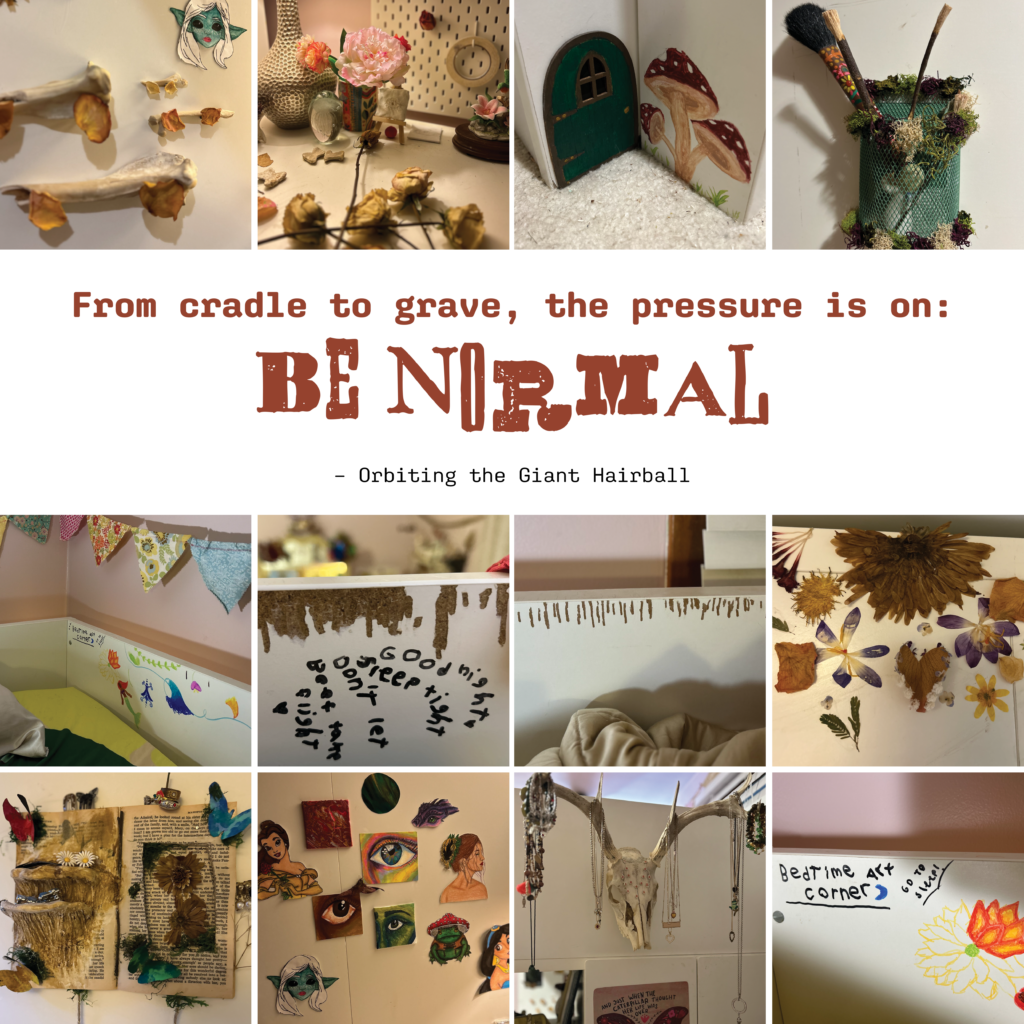I let my teen destroy her bed – and it’s become a storytelling medium…
When I was a new mom, people gave me a ton advice, as they will. I let some of it sink in, and the rest got tossed right out the proverbial window. But one of my favorite comments was this:
“Say yes as often as you can, so that when you say no, your ‘no’ means something.”
One day, she asked if she could draw on her bed. I initially felt the instinctual ‘No’ rising up in me…but then I thought about it and reasoned that 1) the bed is a press-board piece that we found used, online, for dirt-cheap. It came with half-peeling stickers on it and will likely be very beat up by the time she grows up; and 2) She’s been known to permanently attach things to walls (with glue – yikes!) so this would actually be an opportunity to redirect her creative energy away from permanent fixtures in the house.
At this point, months after being given permission, her white loft bed is decorated with everything from pressed flowers, scratch marks like you’d see in jail cells in the movies, marker doodles by her friends, painted dioramas, more stickers, static cling decor, and even a buck skull with antlers (that she found and bleached with supervision), on which she hangs her jewelry collection.
Bonus: Her friends think she is SO lucky to be allowed such freedom, and I’m reminded how far simple surprise and delight moments go to bring joy into peoples’ lives.
I know that she’s just getting started (I literally hear hammering in her room as I write), and I’m thinking that the bed may feel more like a time capsule than a used piece of furniture by the time she outgrows it.
This post is not actually about parenting.
It's about allowing for margin in life in order to explore and develop originality.

According to the American Heritage Dictionary® of the English Language, the definition of ‘Normal’ is as follows:
Conforming with, adhering to, or consulting a norm, standard, pattern, level, or type; typical. Functioning or occurring in a natural way; lacking observable abnormalities or deficiencies. Relating to or designating the normality of a solution.
And it defines ‘Original’ to mean:
Preceding all others in time; first. Not derived from something else; fresh and unusual. Showing a marked departure from previous practice; new.
What’s ironic is that if educators aren’t conscientious about this, by the time students graduate, they may be ‘successfully’ shaped to fit a more typical norm…but innovative thinking requires the fresh and unusual perspectives of more original thinkers.
Our world has enough robots as it is.
“Our creative genius is the fountainhead of originality. It fires our compulsion to evolve. It inspires us to challenge norms. Creative genius is about flying to new heights on untested wings. It’s about the danger of crashing. It’s amorphous, magical, unmeasurable and unpredictable.”
Gordon MacKenzie, 'Orbiting the Giant Hairball' Tweet
Research and writeups abound on how our education systems unintentionally cap imaginative brilliance. Its as though societies think that in order to endure, they need to project a baseline for what ‘normal’ means, in order to establish a sense of order. It’s no wonder that by middle school, numbers of those who identify as artistic people (at least out loud) have drastically diminished.
"From cradle to grave, the pressure is on: BE NORMAL."
Gordon MacKenzie, 'Orbiting the Giant Hairball' Tweet
Permission to Think Differently
In my opinion, if we do anything to set the next generation up for success, it should be this:
We need to find ways to encourage students, new hires, and future innovators to think differently and explore outside of their (and/or your) comfort zones. The pursuit of perfection is not the goal, contrary to the way we tend to measure academic success. Strengthening creative confidence is actually the key – especially as that element of humanity becomes even more valuable as artificial intelligence reduces the need for humans to be so hands-on for the more mindless, repetitive tasks.
The ‘winners’ in this equation will be those who can exercise their ability to ask why (respectfully, with honest curiosity), and manage to side-step the pressure to conform to unnecessary constraints. And the 2nd place winners will be us: Those whose teams they join, and who could benefit from their unique perspectives and problem-solving approaches.
